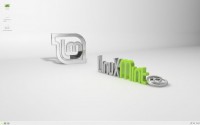What Are Some of The Benefits of Having a Favicon?
Whenever we are spending time on the internet, more than one tab is usually open, right? Reading news, chatting on Facebook, listening to music on Spotify or YouTube, and so on. Multitasking is easy when you are online. But how do we get to switch between multiple tabs that are open at the same time so fast? The answer is quite clear – a favicon. It is that little icon which you see at the top left corner near the website name. Facebook has a letter F inside a blue background, YouTube has a white “play” button in a red background, Twitter has a bluebird. The list is endless.

If you are looking to get a website of your own, you will need to get a favicon as well. However, you might be thinking that it is not something you can accomplish. When you are creating a favicon, you should not be bothered by the lack of graphic design skills. If anything, it will be a perfect opportunity to learn some of that.
What Is It?
While the answer should be clear, it is worth delving deeper into the definition since you will be looking to create one for your business as well.
A favicon is akin to a company or brand logo. In fact, quite a few favicons are just a rehashed version of the logo. That is not to say that such a practice should be looked down upon. Perhaps quite the opposite. If a logo is already recognized, it would make less sense not to use it as your favicon.
Usually, favicons are in a 16×16 pixel format as it is a very small icon, but in some cases, the size can increase. It depends on the browser and the content management system.
This happens because favicons are relevant to more than just being a visual aid, but also when someone bookmarks a page or saves a shortcut using their smartphone or tablet.
Benefits

Image source: Unsplash.com
Now that the definition is out of the way, we can move on to the really important stuff – the benefits. On the surface, favicons appear to be nothing else than a simple picture that holds little to no significant meaning. But the reality is quite different.
Credibility
Even if it is extremely small, favicon still helps with your site’s credibility and it makes the whole thing look more professional. Not to mention the fact that so many people judge a website by the design, similar to those who judge a book by its cover. So whenever there is an opportunity to score some extra points, you absolutely have to take it.
Brand Awareness

Favicons are what people associate brands with more often than you think. Our brains tend to process visuals faster than texts, so it is only natural that whenever someone sees a familiar face, or in this case, icon, they will instantly recognize it.
And picture this – whenever someone visits a website, they see the name of a site, but there is a favicon next to it at the same time. The two are connected and inseparable. As far as branding goes, you could argue that a favicon plays a much bigger role.
Consistency
While not the biggest advantage, it is still worth mentioning that you want to be consistent with your overall design plan. Web interface consists of small things that make the whole picture, and favicon hast to be included here as well. Not to mention that an average person on the internet already expects to see a favicon whenever he or she visits a website.
SEO

That is correct. A favicon has a positive effect on search engine optimization as well. And while the effects are indirect, they still make the difference.
The first one is higher usability of your website. Increased usability means a higher rank in search engines. A favicon next to a website’s name helps people save time when switching tabs and identify your site.
Google has an algorithm and sees when a website gets bookmarked. And the tendency shows that those with a favicon tend to be more popular in this regard. Also, Google receives a signal whenever someone bookmarks a site with a favicon. Losing out on this is not a good thing, so why wouldn’t you want to add a favicon as well?
To sum it all up, favicon has plenty of advantages that are mostly related to improving the overall user experience on your website. Given how easy it is to get one without even hiring a professional designer since there are plenty of generators online, it should be a no-brainer that every website must have a favicon



